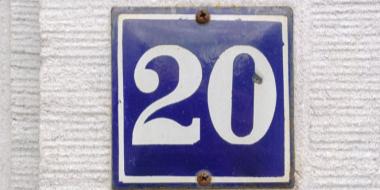The Best Combination CV Format To Get You Hired
Choosing the right CV format is a big decision that can have a major impact on your chances of job application success. If you want to emphasise both your skills and your experience, a combination CV could be ideal. This hybrid format is easy to read and combines the best of reverse-chronological and functional CV structures. In this article, we discuss how to write a combination CV to get your applications noticed.

Benefits of a Combination CV
A combination CV is a useful tool for jobseekers in various different scenarios and career stages. A traditional chronological CV is typically best if you want to focus on your work experience, while the functional CV format is better for those who prefer to draw attention to their skills. However, if you want to emphasise both your work experience and your skills equally, a combination CV is perfect.
The combination format gives you scope for showing a career chronology and the evolution of your professional development. Additionally, it also allows you to highlight skills on your CV that might be particularly valuable for the role, or set you apart from other candidates. For highly technical roles or for applicants who have some relevant work experience, but not enough to build a strong CV around, this approach can be beneficial.
Should You Use a Combination CV?
The decision to use a combination CV typically hinges on how confident you feel about the depth of your work experience, and its suitability for the role you’re applying for. Generally, if you’re an entry-level candidate with little or no relevant work experience, a functional CV format is best. This is because it highlights your skills and places less emphasis on work achievements. For candidates with plenty of relevant industry experience, a traditional CV format is usually the best choice. This focuses much more heavily on your work experience and career achievements.
However, if your experience levels and career stage fall somewhere between these two extremes, a combination CV can be a powerful choice. Perhaps a chronological list of your previous employment doesn’t do justice to your abilities, or doesn’t adequately illustrate your suitability for the job. Some situations where this may be the case include:
- A career changer with some work experience that is ultimately less relevant than your transferable skills and qualifications.
- Someone with a few years’ experience (typically between three and eight years), looking to step into a more senior role.
- Returning to the workforce after some time off, and being mindful of employment gaps on your CV.
- Freelance workers with a history of short-term engagements and contracts.
- Experienced candidates with wide-ranging knowledge of various industries.
If you fit into any of these career stages or scenarios, you might prefer to use a combination CV.
Crafting a Combination CV
A combination CV still includes most of the sections of a traditional CV, but the balance and emphasis of those sections is slightly different, as is the order. Most CV structures include the following sections:
- Header
- CV summary
- Work experience
- Education
- Skills
Depending on your experience and the job you’re applying for, you might also include optional sections such as certifications, languages, achievements, internships, volunteer work, hobbies and interests or other useful additional information.
A combination CV takes the same sections as a traditional CV, and re-orders them. The skills list, which on a traditional CV is typically below work experience, is given top billing below the CV summary, and tends to include far more detail than in a traditional CV. Meanwhile, the work experience section sits below the skills list. It still provides enough detail to summarise your relevant experience, and is positioned more prominently than it would be in a functional CV, but it has equal billing with the expanded skills section.
Below is a summary of the different sections of a combination CV, and tips on how to approach each section for maximum impact with the reader:
Header and Contact Information
Start your CV with a header that contains your contact information. A combination CV uses the standard information for a CV header, including your name, email address and phone number, plus an indication of your location. If you want to add a CV title or headline to your header, this can help to grab the attention of the reader.
CV Summary or CV Objective
As with a traditional CV format, the first main section of a combination CV is your CV summary or objective. This is a brief introduction to your application, highlighting your key skills and achievements in a concise paragraph of up to three sentences. If you’re a less-experienced candidate, you may wish to write a CV objective, which focuses less on your career date, and more on your ambitions and goals.
Skills List
This is where the combination format starts to diverge from a traditional CV layout. Instead of placing your work experience directly below your CV summary, a combination CV adds a skills summary. In a traditional CV, your skills list may be a brief bullet list of key soft and hard skills that match the skills listed in the job description. However, for a combination CV, you’ll want to summarise your skills, to give the employers a better understanding of how you can use them to good effect in the job.
The skills section has equal importance to the work experience section in a combination CV, so make sure it provides enough detail to justify it’s elevated billing in this CV layout. Follow these steps to make the best possible impression with your skills section:
- Review the job description to understand the most essential skills for the role, and compare them to your own skills portfolio.
- Select a few of your best hard and soft skills and list them in bullet points.
- Write a summary of your skills that showcases how you might use them in the role.
Here is a skills section CV example from a combination CV, covering hard skills and soft, transferable skills, with a skills summary:
Skills summary:
- Detail-oriented project manager with a track record of delivering complex projects on time and within scope.
- Skilled proposal writer, comfortable collaborating with cross-functional teams to win new business and achieve project goals.
- Flexible, adaptable multitasker with strong communication skills, maintaining efficient, productive teams and effectively managing competing priorities.
Hard skills:
- Project planning
- Budgeting
- Automated reporting
- Proposal writing
Soft skills:
- Teamwork
- Multitasking
- Adaptability
- Communication
Work History
Your employment history section gives you the chance to show how you’ve put your skills to use in the world of work. Focus on career achievements that show how you meet the job description, and use strong verbs and keywords that reflect the requirements of the role.
For each entry in your work experience section, add your job title, the name of your employer, its location and the dates you worked there. Under this, add bullet points that showcase your achievements, and illustrate how you’ve put your skills into action in the workplace.
Here’s an example work history section entry for an accountant CV:
Accountant, Wheldon & Partners Financial Services, Bristol, March 2019 — present
- Managed a portfolio of 20 clients, using Quickbooks to maintain accurate records and ensuring 97% on-time payments.
- Prepared financial statements, budgets and forecasts to increase departmental efficiency, reducing costs by 11%.
- Implemented automated reporting processes, reducing reporting timelines by 40% and increasing accuracy using Excel and ERP systems.
Education
In your education section, list your highest or most recent qualifications, including the name and level of the award, the name of the institution, its location and your dates of study. If you’d like to emphasise specialist technical skills and expertise gained through your studies, you can add bullet points under each entry to illustrate these. For example:
BA (Hons) Business Management, University of East Anglia, Norwich, September 2014–June 2017
- Specialised in business ethics and CSR, producing a dissertation on the impact of corporate social responsibility on consumer buying behaviour, comparing ethical and mainstream brands.
Expert Tip:
While your skills section and work experience section share more equal emphasis in a combination CV, make sure you don’t repeat yourself between them. Use your skills section to summarise your key skills, and your work experience section to show how your use of those skills has contributed to successful outcomes and positive career achievements.
Tips for a Successful Combination CV
Follow these quick tips to ensure you make the best possible impression with your combination CV:
- Choose the most suitable CV format for each application: Be mindful that the most suitable CV format for you may differ depending on the role you’re applying for. Consider whether a combination CV gives you the best chance of success.
- Tailor your CV to the job: Once you’ve settled on the most suitable CV format, tailor the content of your CV specifically to the role. Use keywords and phrases from the job description to show your suitability.
- Summarise your hard and soft skills in your skills section: Include a list of both hard and soft skills in your skills section, and provide a summary, so the reader can quickly and easily understand your key strengths and qualities.
- Focus on achievements and accomplishments in your work history section: Use your work experience section to showcase how you’ve put your relevant skills to good use in your career to date.
- Use action verbs to describe your accomplishments: Start each CV bullet point with a strong verb to give the reader the impression of you as a proactive, impactful employee who’s made a difference in their career to date.
- Use a template to save time and make sure your resume is formatted correctly: Create your CV using a CV template with a clear, professional layout and subtle design elements. This will help your CV to pass the ATS stage, as well as making it more eye-catching and engaging for the reader.
The decision to use a combination CV typically hinges on how confident you feel about the depth of your work experience, and its suitability for the role you’re applying for.
Key Takeaways for a Successful Combination CV
If you want to balance the emphasis of your skills and work experience on your CV, a combination CV could be perfect for you. Use your skills section to summarise your key skills, and your work experience section to show how you’ve put those skills to good use. Using a CV maker like Jobseeker can help you structure and present your combination CV for the best possible impression with employers. Sign up today and find CV and cover letter tips and resources to create a winning job application.



